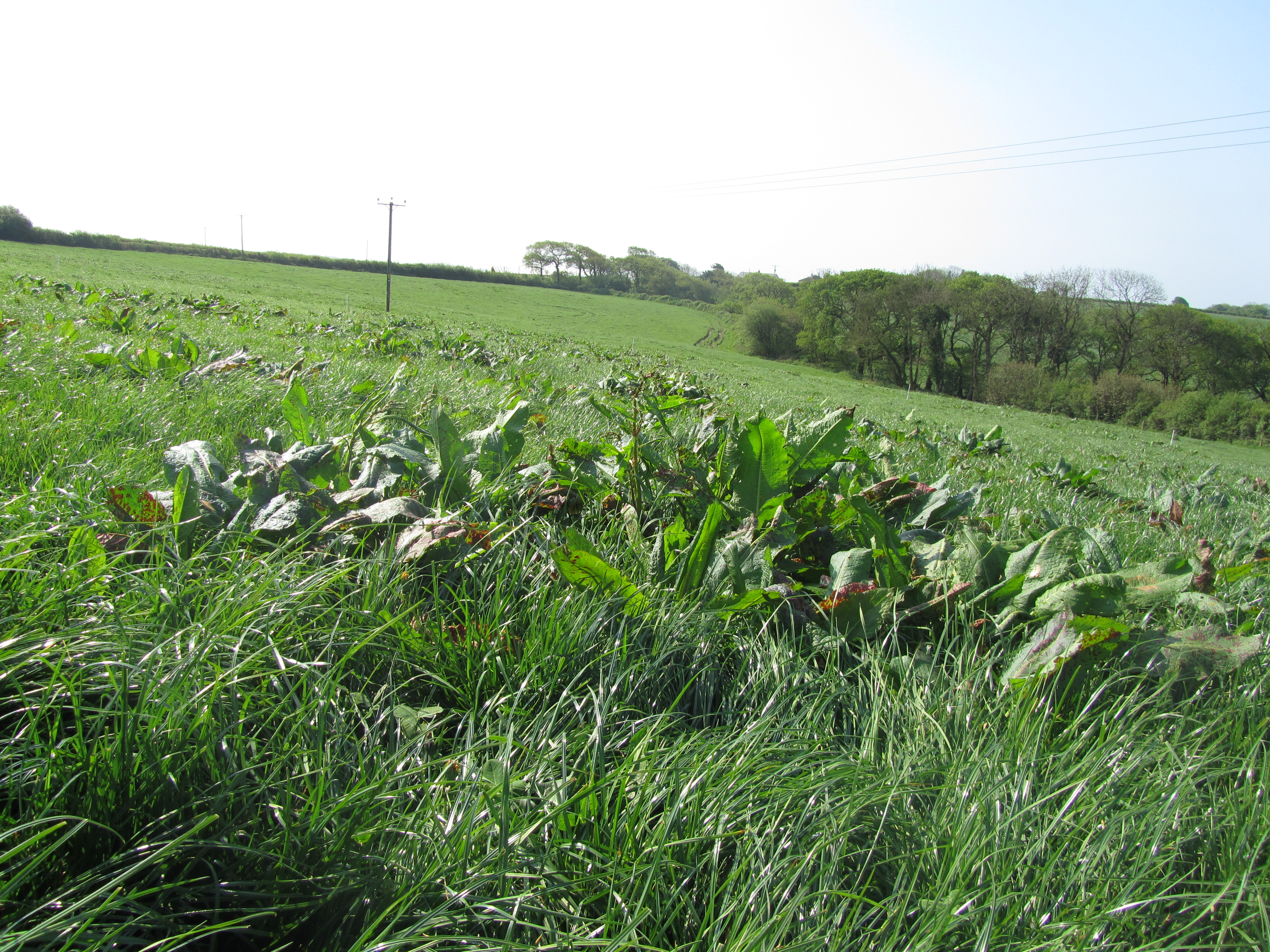
Farmers desperate to replenish empty forage stocks in the next few weeks can increase silage yields and quality by getting rid of broad-leaved weeds like docks.
Field trials carried out by consultants North West Agronomy based in Northwich, examined the effect of dock contamination at a level of 14 plants/m2, on silage made from three cuts of grass. The results showed that areas treated with a dock herbicide like DoxstarPro, gave the highest yields at every cut, and the resulting silage had the highest energy levels.
“This should not be a surprise,” says David Roberts, grassland agronomist with Dow AgroSciences. “Where weeds grow, grass does not, so yields are bound to suffer in weedy fields. Research carried out by SRUC showed that a 10% infestation of docks reduces grass growth by a similar amount – so having weed-free leys will make a difference.
“In the trials, the herbicide treated areas also produced silage with an extra 0.3MJ of Metabolisable Energy (ME). Spread over 1,000 tonnes at 25% dry matter, this is enough to produce an extra 14,150 litres of milk. At 30p/litre, this is worth an extra £4,245 of potential return.
“For beef farmers this better quality silage could support £7,990 worth of extra beef production.”
Use grass-safe herbicides
Product choice will be vital this year as every blade is precious, so avoiding herbicides with a reputation for being harsh on grass will be essential.
Modern translocated herbicides containing active ingredients such as triclopyr (found in DoxstarPro and Pastor) and aminopyralid (found in Forefront T), are the most reliable solution for controlling broad-leaved weeds in grassland.
Crucially they are also very safe to grass, and will not adversely affect its subsequent growth, ensuring maximum productivity.
Spray between cuts
Spraying is most effective when the docks are at the rosette stage and actively growing up to 25cm across or high. Due to the late spring, they may not have reached this stage by the end of April, when pre-first cut sprays are normally applied.
If this is the case, it may be better to treat fields 21 days after first cut. This will allow the weeds to re-grow to the perfect size, and leaves at least three weeks before second cut. This gives time for the active ingredients to produce a thorough and long-lasting effect.
“While this means that first cut yields and quality will be affected by any weeds present, at least second and subsequent cuts will produce more and better quality silage, so will help farmers short of forage.” says Mr Roberts.
